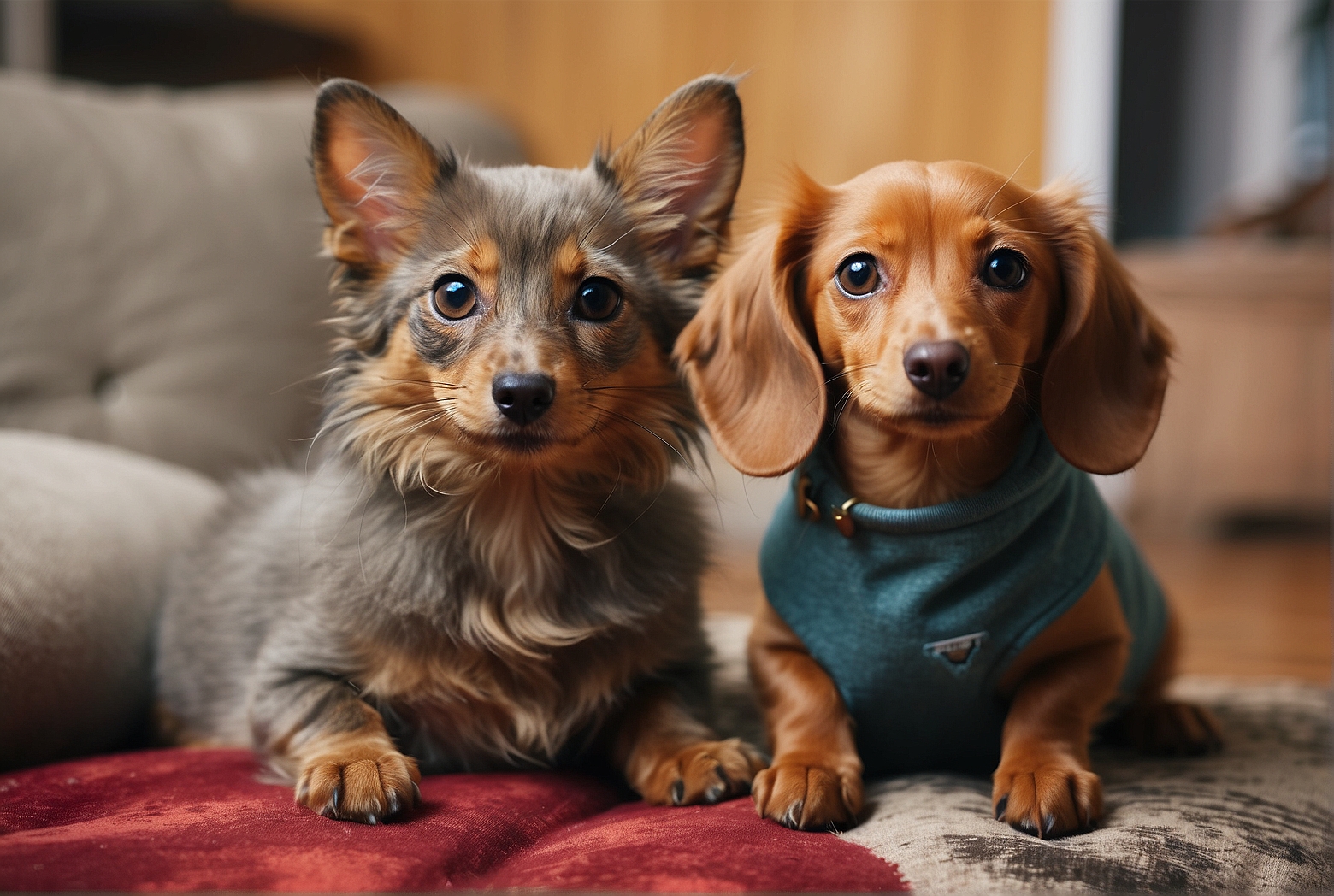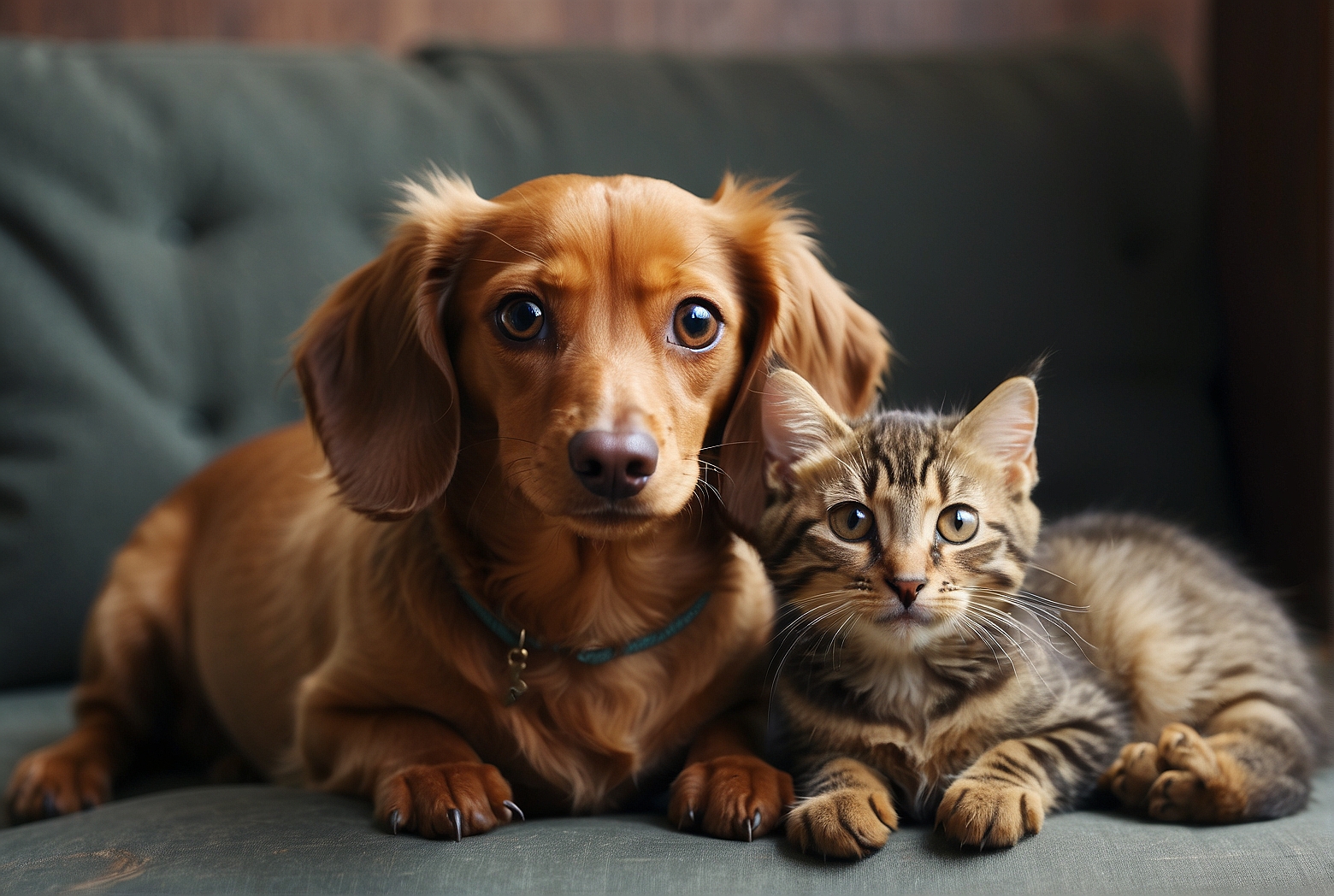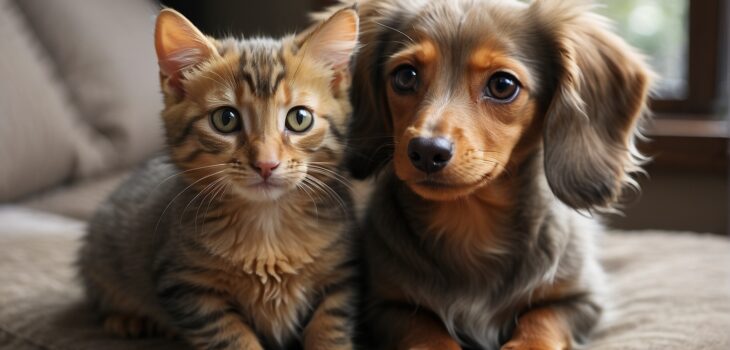Last Updated on April 6, 2024 by admin
Have you ever wondered if Dachshunds and cats can peacefully coexist? Whether you’re a cat lover in search of a new canine companion or a Dachshund enthusiast looking to add a feline friend to your family, understanding the compatibility between these two popular pets is essential. While each individual’s personality plays a significant role, Dachshunds are generally known for their affectionate nature and social tendencies, making them a potential match for cats. However, it’s important to take certain factors into consideration to ensure a harmonious living environment for both animals.
Introduction
If you’ve ever wondered whether Dachshunds and cats can coexist harmoniously, you’ve come to the right place! In this comprehensive article, we will delve into understanding both Dachshunds and cats individually, exploring their physical characteristics, personality traits, and behaviors with other animals. We will also discuss the various factors to consider when introducing a Dachshund to a cat, as well as signs of compatibility and incompatibility to watch out for. Finally, we’ll provide you with some valuable tips for ensuring a successful coexistence between these two beloved pets. So, let’s get started on this exciting journey of understanding Dachshunds and cats!
Understanding Dachshunds
Physical characteristics
Dachshunds, also known as Wiener dogs or sausage dogs, are small to medium-sized dogs with a distinctive elongated body and short legs. They come in different coat varieties, including smooth, long-haired, and wire-haired. Dachshunds have long, muscular bodies and expressive, intelligent eyes. They typically weigh between 16 to 32 pounds, with a height ranging from 8 to 9 inches at the shoulder.
Personality traits
Dachshunds are often described as curious, brave, and affectionate. They are known for their lively and playful nature, with a great sense of humor. Dachshunds are also renowned for their loyalty to their human companions and can form strong bonds with them. While they may be friendly and outgoing, they can also be a bit stubborn at times.

Behavior with other animals
Dachshunds, like any other breed, can have varying degrees of compatibility with other animals, including cats. Their behavior towards cats largely depends on their early socialization experiences, personality traits, and individual history. While some Dachshunds may get along well with cats, others may display more dominant or prey-driven behavior. The key lies in understanding and managing their interactions appropriately.
Understanding Cats
Physical characteristics
Cats, known for their independent and agile nature, come in various sizes and coat patterns. They have a graceful and slender body, sharp retractable claws, and excellent night vision. Cats can have different coat lengths, including short, long, or even hairless. They typically weigh between 8 to 10 pounds, with a height ranging from 9 to 10 inches at the shoulder.
Personality traits
Cats have a reputation for being independent, curious, and often selective in their affections. They enjoy their solitary moments but can also be highly social pets. Cats are known for their agility, playfulness, and their ability to form strong bonds with their human companions. Each cat has its own unique personality, ranging from introverted and reserved to extroverted and outgoing.
Behavior with other animals
Cats have a diverse range of behaviors towards other animals, including dogs. Some cats may be more accepting and tolerant of dogs, while others may exhibit fear or aggression. A cat’s behavior towards a Dachshund will depend on factors such as their past experiences, individual temperament, and their ability to establish boundaries. Proper introductions and gradual acclimation can help foster a positive relationship between cats and Dachshunds.

Factors to Consider
Dachshund’s personality and history
When considering introducing a Dachshund to a cat, it’s important to evaluate the Dachshund’s personality and history. Understanding whether the Dachshund has previously interacted with cats or other animals can give you insights into their behavior.
Cat’s personality and history
Similarly, understanding the cat’s personality and history plays a crucial role in predicting their behavior towards a Dachshund. Cats who have had positive experiences with dogs in the past may be more open to the introduction, while those with negative experiences may require more time and careful introductions.
Early socialization
Both Dachshunds and cats benefit from early socialization experiences. By exposing them to various animals, including each other, during their formative weeks and months, they can develop positive associations and become more adaptable to different environments.
Training
A well-trained Dachshund and a cat with basic obedience skills are more likely to coexist peacefully. Training helps establish boundaries, teach appropriate behaviors, and allows for better communication between the two pets.
Environment
Creating a harmonious living environment is essential for the successful coexistence of Dachshunds and cats. Providing separate spaces, such as dedicated sleeping areas, litter boxes, and feeding stations, ensures each pet has their own territory and reduces the chances of resource guarding or territorial behavior.
Supervision
Supervision is crucial during the initial stages of introducing a Dachshund to a cat. Close observation allows you to intervene if any negative behaviors are displayed and prevents potential conflicts or harm to either pet.
Introducing a Dachshund to a Cat
Initial separation
Before introducing a Dachshund to a cat, it’s important to keep them separated initially. This allows both pets to become familiar with each other’s scents and presence without direct interaction. Utilize baby gates or separate rooms to maintain a physical barrier while allowing visual and olfactory exposure.
Gradual introduction
Once both pets have become accustomed to each other’s scents, you can proceed with a gradual introduction. Start by allowing short, supervised face-to-face interactions. Gradually increase the duration and intensity of these interactions, always ensuring the safety and comfort of both pets.
Providing separate spaces
Throughout the introduction process, it is essential to provide separate spaces for both the Dachshund and the cat. Each pet should have access to their own food, water, litter box, and resting areas. Having their own safe spaces helps reduce stress and allows them to retreat when they need privacy or relaxation.
Monitoring interactions
While the Dachshund and cat spend time together, closely monitor their interactions. Look for signs of compatibility, such as playfulness, curiosity, and a relaxed body language. Conversely, be mindful of signs of incompatibility, such as aggression, excessive chasing, fearfulness, or excessive hiding.
Positive reinforcement
Encourage positive interactions between the Dachshund and cat through reward-based training and positive reinforcement. Praise and reward both pets for calm and friendly behavior, which helps create positive associations and strengthens their bond over time.
Signs of Compatibility
Playfulness
A Dachshund and cat that engage in playful interactions, such as chasing toys or engaging in gentle play fights, often exhibit compatibility. Playfulness is a positive indicator that both pets are comfortable in each other’s presence.
Curiosity
If the Dachshund and cat display curiosity towards one another, such as sniffing, investigating, and approaching each other in a non-threatening manner, it is a promising sign of compatibility. Curiosity demonstrates a level of acceptance and interest in forming a connection.
Tolerance
Signs of tolerance, such as the Dachshund and cat allowing each other to share space without aggression or constant tension, indicate a potential compatibility between the two pets. This mutual respect and acceptance contribute to a harmonious coexistence.
Respect of personal space
When a Dachshund and cat demonstrate an understanding of personal boundaries and give each other space when requested, it showcases compatibility. Respecting each other’s personal space fosters a positive dynamic and minimizes potential conflicts.
Relaxed body language
Observing the body language of both pets is crucial in assessing their compatibility. Relaxed body postures, wagging tails, and soft ears indicate that both the Dachshund and cat are comfortable and at ease in each other’s presence.
Signs of Incompatibility
Aggression
Aggression, such as growling, hissing, lunging, or biting, is a clear sign of incompatibility between a Dachshund and cat. Immediate intervention and professional guidance are necessary to prevent harm to either pet.
Fearfulness
If either the Dachshund or cat displays signs of fear, such as flattened ears, raised hackles, cowering, or excessive hiding, it suggests an incompatibility. Fearful behavior can lead to stress and potential conflicts, and careful management is required to alleviate their anxiety.
Excessive chasing
While some light chasing can be playful, excessive and intense chasing by a Dachshund towards a cat may indicate a prey-driven instinct that can be distressing for the cat. Intervention and redirection of the Dachshund’s attention are necessary to avoid potential harm.
Excessive hiding
Persistent hiding by the cat and avoidance of the Dachshund may signify incompatibility. Excessive hiding indicates fear or discomfort, and it is essential to create a safe and secure environment for the cat.
Constant tension
If there is a constant state of tension between the Dachshund and cat, characterized by raised fur, growling, or stiff body posture, it suggests incompatibility. Continuous tension can lead to stress and potential conflicts, which should be addressed to ensure the well-being of both pets.
Tips for a Successful Coexistence
Slow and controlled introductions
Take your time with the introduction process, allowing both the Dachshund and cat to adjust at their own pace. Rushing the process can lead to stress and negative associations. Remember, patience and gradual acclimation are key to a successful coexistence.
Equal attention and affection
Ensure that both the Dachshund and cat receive equal attention, love, and affection from you. This helps prevent feelings of jealousy and minimizes any potential behavioral issues arising from a perceived lack of attention.
Providing separate resources
To avoid potential conflicts, provide separate resources for both pets. This includes separate food and water bowls, litter boxes, and comfortable resting areas. This ensures each pet has their own space and reduces the likelihood of resource guarding.
Training and socialization
Both the Dachshund and cat can benefit from training and socialization. Obedience training helps establish boundaries and reinforces positive behaviors, while socialization exposes them to various environments and different animals. Training and socialization play vital roles in creating a harmonious living arrangement.
Ensuring safety
Always prioritize the safety of both the Dachshund and cat. This includes supervising their interactions, keeping harmful objects out of reach, securing windows and doors, and providing a safe and escape-proof environment. Safety measures provide peace of mind and minimize the chances of any accidents or harm befalling either pet.
Seeking professional help if needed
If you encounter persistent challenges or concerning behaviors between your Dachshund and cat, it is essential to seek professional help. Consulting with a certified animal behaviorist or a veterinary behaviorist can provide valuable guidance and support in resolving any conflicts or behavioral issues.
Common Challenges
Jealousy
Jealousy can be a common challenge when introducing a Dachshund to a cat. Both pets may vie for your attention, leading to potential conflicts or attention-seeking behaviors. By providing equal amounts of attention and affection to both pets, you can help alleviate jealousy and create a balanced environment.
Resource guarding
Resource guarding, such as growling or becoming aggressive when the Dachshund or cat tries to approach their food or toys, can create tension between them. Implementing behavior modification techniques and seeking professional guidance can help address and manage resource guarding behaviors.
Territorial behavior
Cats often have a strong sense of territory, and the introduction of a Dachshund may challenge their established boundaries. Gradual introductions and providing separate areas for each pet help minimize territorial conflicts and ensure a smooth adjustment.
Predatory instincts
Dachshunds, as hunting dogs, possess innate predatory instincts. These instincts may be triggered in the presence of a cat, resulting in chasing or aggressive behavior. Supervision, redirection, and training can help manage and redirect these instincts towards more appropriate behaviors.
Communication mismatches
Dogs and cats communicate differently, and misunderstandings can lead to conflicts. Dogs rely heavily on body language and vocalizations, while cats utilize more subtle signals. Learning to interpret and respond to the communication styles of both pets can help bridge the communication gap and prevent conflicts.
Conclusion
In conclusion, the compatibility between Dachshunds and cats can vary from individual to individual. Understanding the physical characteristics, personality traits, and behaviors of both pets is crucial in creating a harmonious coexistence. By considering various factors such as personality, history, early socialization, training, and environmental management, you can increase the chances of a successful introduction. Continuous supervision, recognition of signs of compatibility and incompatibility, and implementing appropriate measures ensure the safety and well-being of both the Dachshund and cat. Remember, patience, understanding, and professional guidance, if needed, are key to fostering a loving and peaceful relationship between these two adorable pets.




